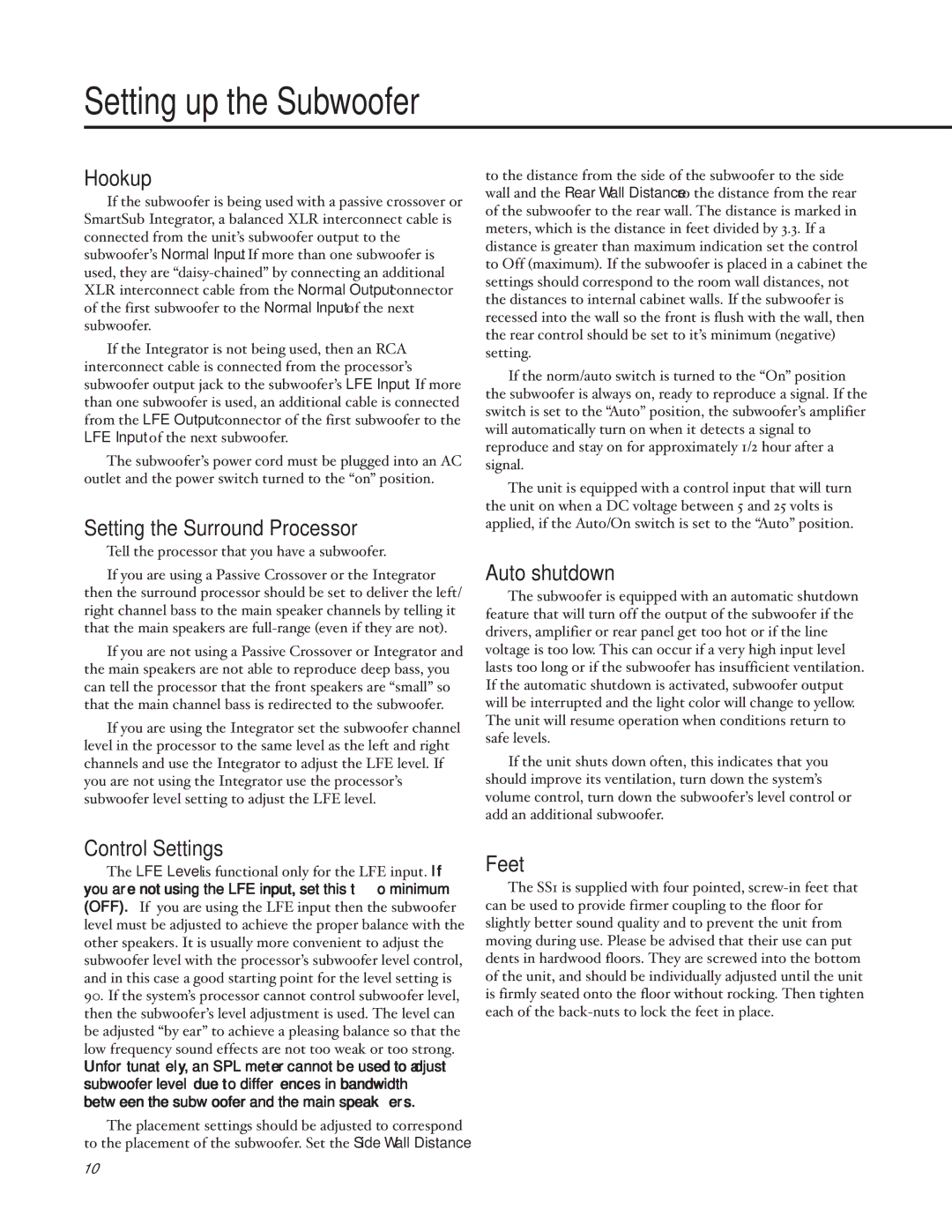SS1 Subwoofer specifications
Thiel Audio Products has long been revered for its commitment to high-quality sound reproduction, and the SS1 Subwoofer is no exception. This subwoofer represents a blend of innovative engineering and exceptional craftsmanship, designed to enhance any audio system. With a focus on delivering deep, accurate bass, the SS1 is perfect for discerning audiophiles and home theater enthusiasts alike.One of the standout features of the SS1 is its powerful 12-inch driver. This custom-designed woofer utilizes advanced materials and a sophisticated cone shape to ensure a resilient yet responsive performance. The driver is housed in a robust enclosure, reinforced to minimize resonances and vibrations that could distort sound quality. This design allows the SS1 to produce tight, controlled bass that can be felt as much as heard.
The SS1 also incorporates Thiel's proprietary digital amplification technology, which not only maximizes power output but also enhances efficiency. With an impressive continuous power rating, the SS1 can handle demanding playback without sacrificing sound fidelity. The integration of digital signal processing (DSP) ensures that the bass response is finely tuned, offering adjustable parameters that allow users to tailor the sound to their specific environment and preferences.
Connectivity options on the SS1 are user-friendly, featuring both balanced and unbalanced inputs. This versatility allows easy integration with a wide range of audio systems, from stereo setups to sophisticated multi-channel configurations. The subwoofer also includes high-pass and low-pass filters, enabling seamless integration with other components and ensuring an unhindered audio experience.
In addition to its powerful performance, the SS1 Subwoofer showcases an elegant design, characterized by its sleek cabinet finish and understated aesthetics. It is available in several high-quality veneers, allowing it to complement a variety of home decors while maintaining its professional look.
In summary, the Thiel Audio Products SS1 Subwoofer is engineered for those who demand an immersive audio experience. With its advanced driver technology, efficient digital amplification, and thoughtful design, the SS1 redefines bass performance, making it an excellent choice for both music lovers and movie buffs. Whether used in a stereo system or a surround sound setup, the SS1 delivers the depth and precision that is the hallmark of Thiel Audio.
